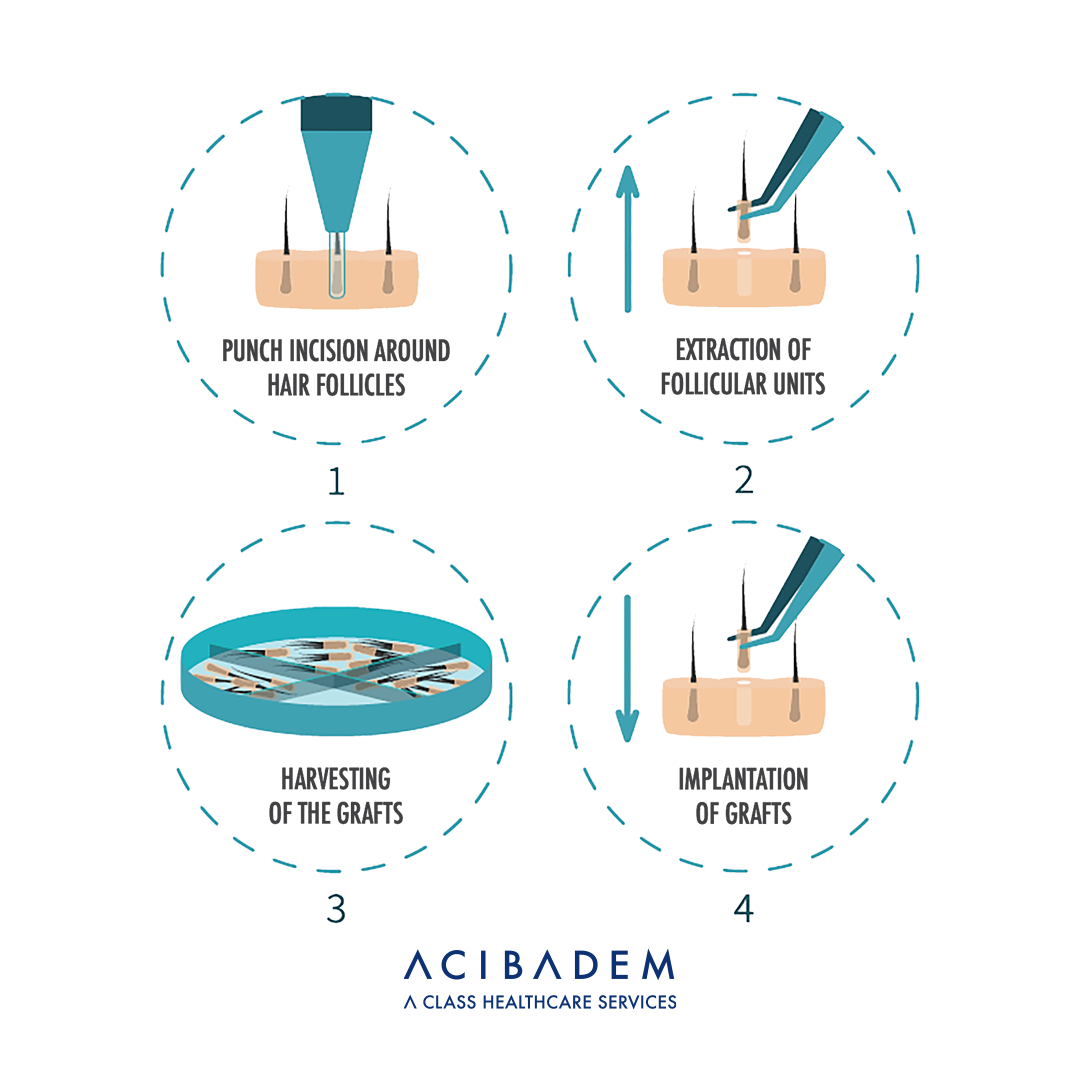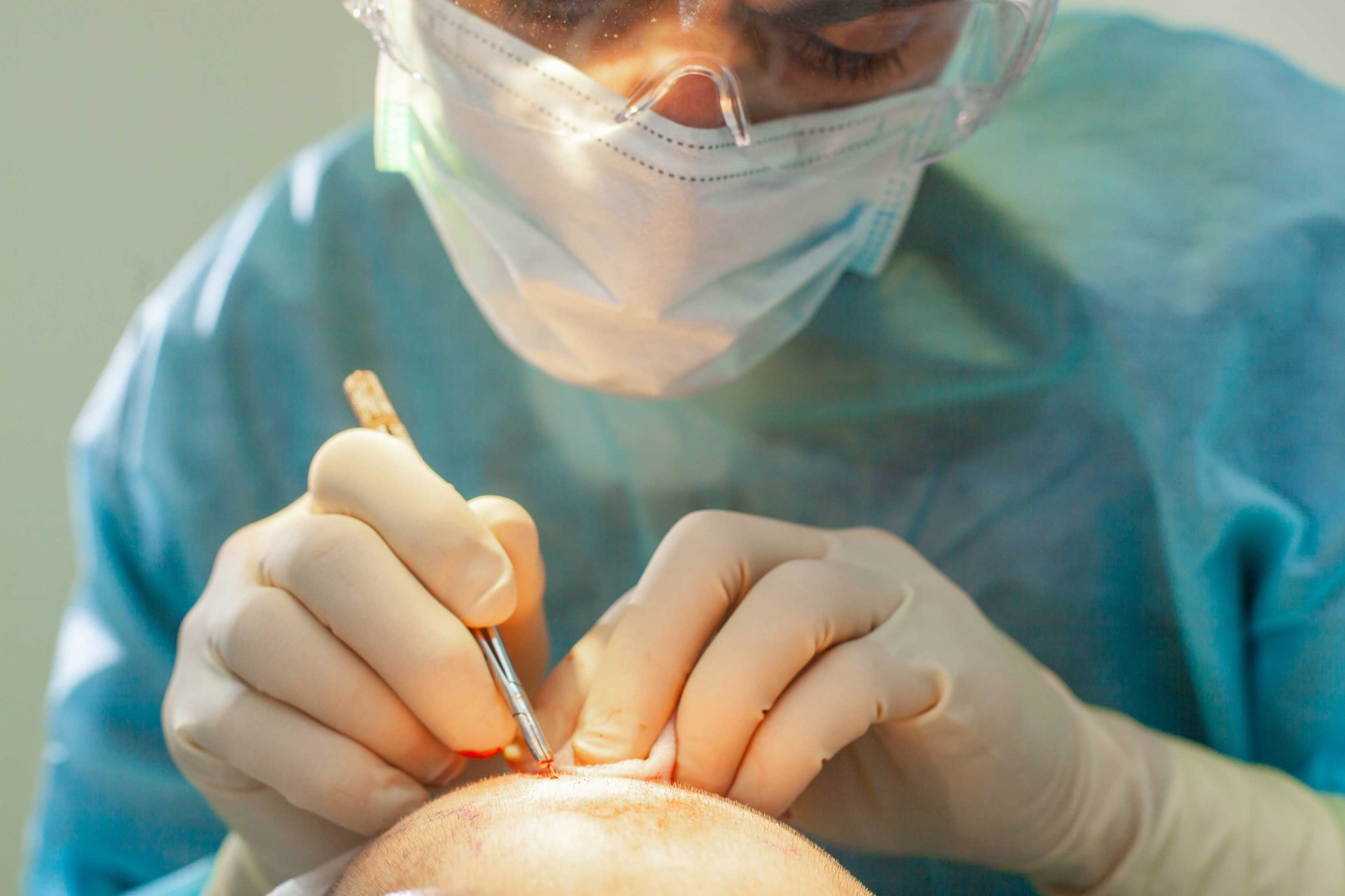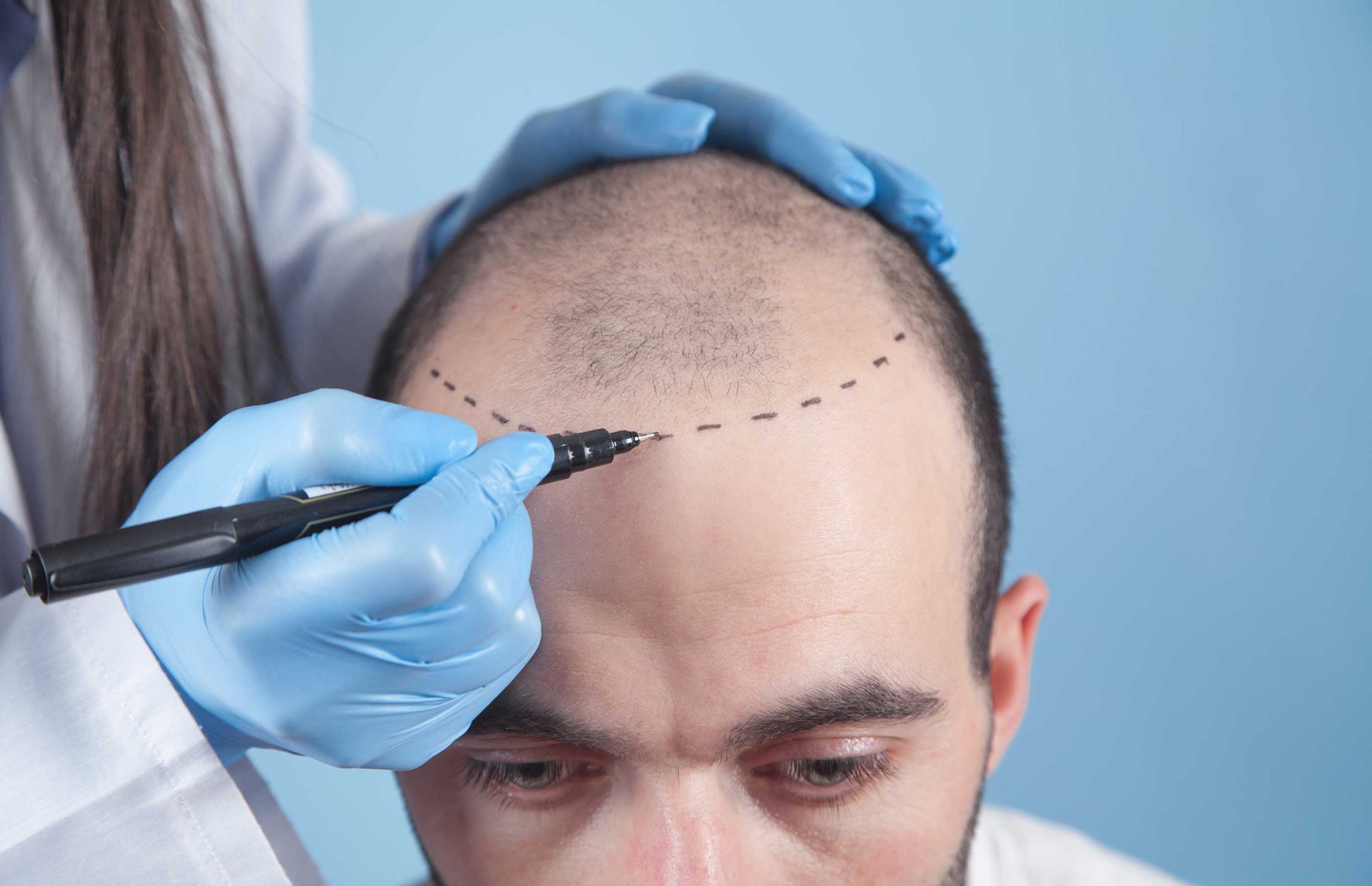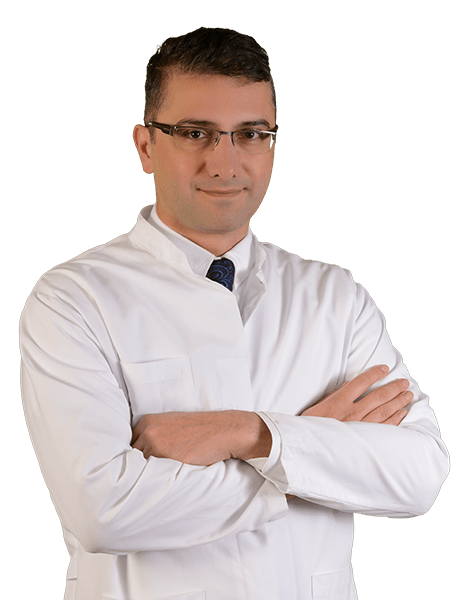Hair transplant is the ultimate treatment for loss of hair. Loss of hair can be upsetting. Normally, we lose 50 to 100 hairs every day without even noticing. Losing more hair than usual might be a indicator of alopecia. It is a fairly common condition affecting both men and women. About 50 percent of people face the so-called androgenic alopecia. It is a hereditary condition associated with male and female pattern baldness.
The causes of hair loss might happen for several reasons. Hormonal changes, medical conditions and medications, wrong diet, significant weight loss are most common reasons. Stressful events, excessive hairstyling, and aging can also be listed as reasons of hair loss. You should consult a doctor if you experience sudden hair loss. Especially in case of hair falling in strands or bald patches on your scalp, physician evaluation is needed. Treating the underlying cause usually helps manage the hair fall as well.
Hair transplantation surgery process starts with relocating hair follicles from areas with fuller hair. It is usually collected from the sides and back of the head. Thinning or balding spots are covered with collected follicles. It can also be used to restore beard hair, eyebrows, or eyelashes. There are different techniques that your doctor may use. Determination depends on the extent of hair loss and the affected area.

Up-to-date, there are two commonly used techniques for hair restoration:
The enormous benefit is that you get a brand-new hairline. It is an organic part of your body. You can treat just like any other hair on your head:
You can wash, color, cut, style, and enjoy it for the rest of your life.
All hair transplant options are outpatient procedures performed under local anesthesia to numb the scalp. However, each type of procedure has its advantages and disadvantages depending on the applied technique. FUE is a minimally invasive procedure, without stitches and visible scars. Therefore, it provides fast recovery and high comfort for the patients. FUE hair transplantation is considered as the golden standard today due to mentioned advantages.
With DHI, the procedure can be performed without shortening the hair, especially for small transplantations. Female patients also prefer DHI due to cosmetic reasons. This method is suitable for women and for men who wish to thicken their hair. It is also a reliable option for whom need a beard transplantation. Each case requires an individual approach, and this is what we do at ACIBADEM Beauty Center.

Arrival in Turkey / Blood Tests
Face to Face Last Consultation / Transplantation
Washing and aftercare.

International patients will be welcomed at our offices in airports and enjoy free wifi. Acıbadem team will start helping you to be directed to your transfer vehicle.

Acıbadem owned vehicles will handle your travels between airport, hotel and hospital until you fly back to your home country.

At Acıbadem Healthcare Group, we provide translation / interpretation services offering assistance in 20 languages.

Acıbadem exclusive prices for accommodation at high quality hotels in the city center
Hair transplantation results may vary significantly from one center to another, depending on the skills and experience of the medical teams. At ACIBADEM, the patient satisfaction rate exceeds 95%.
After the surgery, it takes some time for your skin to heal. You may be prescribed some medicines to reduce the pain and risk of infection. Sensitive areas of your scalp should be avoided from interaction or sweating for following days. Direct sunlight or strenuous activities should be avoided after the procedure. Hair transplant patients generally can return to work and daily routines one week after surgery. However, they should postpone hard exercise and contact sports for a few weeks.
Patients are invited for examination and hair wash one day after transplantation at ACIBADEM. Your doctor will provide you with detailed instructions for post-op hair care. A smooth healing is expected if patient follows up guidelines of the doctor.
You may see that the transplanted hair falls out within four to six weeks after the procedure. This is a normal part of the process, and it is just a temporary phase. Stay positive. The transplanted follicles will soon start producing new healthy hairs. They will reach their full potential within one year.

There are many hair transplantation clinics in Turkey, and choosing the right one can be tricky.
ACIBADEM Beauty Center is distinguished as a world-renowned healthcare brand delivering A-class medical services by international standards. Our impeccable reputation lies in our uncompromised dedication to quality of service and patient satisfaction. ACIBADEM can offer top doctors using advanced techniques, high-tech equipment, and 360-degree patient service to ensure each patient receives safe and professional care. That makes us the first choice for many patients in Europe, the Arabian Peninsula, and all over the world coming to revive their hairlines in Turkey.
If you have been considering hair transplantation at ACIBADEM, you can contact us online for an initial consultation free of charge. You will be asked to provide your photos taken from different angles. It is a fast and easy way to get an expert opinion on proposed treatment options and hair transplant cost estimates or ask all questions related to your journey. Upon your arrival in Turkey, you can benefit from our all-inclusive packages for international patients, including treatment, accommodation, and leisure options for your free time in Istanbul.
Hair transplantation costs an avearage of 5.000-7.000 £ in UK. Prices can go above 10.000 £ according to doctor’s experience and clinic’s physical attributions. This price may go well above 12.500 $ in U.S and 10.000 € in top clinics of Germany. Hair transplantation in Turkey is quite price competitive compared to Western Europe. Turkey also has enormous experience at hair transplantation with every year hundreds of thousands patients flying to country for service. Average hair transplantation cost in Turkey is around 1.600 £. Prices can change according to hospital’s facility quality and the experience of the surgeon.

Aesthetic, Plastic and Reconstructive Surgery